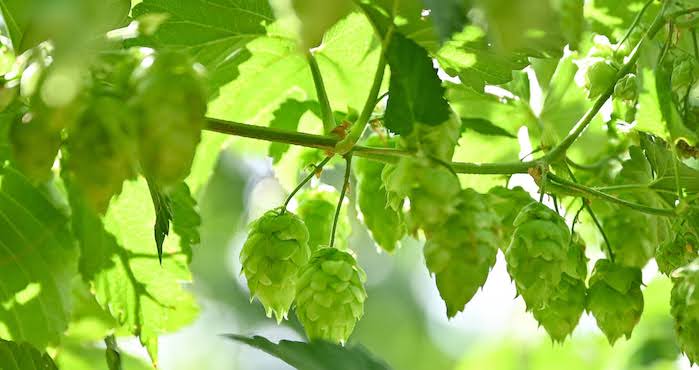Hop Science Newsletter (September 2017)
In this issue: grapefruit flavour, flavour changes with enriched pellets, and 2017 Barth-Haas Grant Winners.

LATER HARVEST – MORE GRAPEFRUIT
This is one of the outcomes of this Japanese research team looking into the influence of harvest date of hops. Specifically they looked into the varieties Cascade, Furano Beauty and Furano Magical; the latter two are Japanese bred varieties from Sapporo. Harvesting these varieties in a time window from 45 to 85 days after flowering, they found that the alpha content is relatively stable as is the content of 4MMP (black currant to catty), but the level of 3M4MP (3-mercapto-4 methylpentan-1-ol) that gives a grapefruit flavour rises significantly with a later harvest date. Also, the oil content in general increases with a later harvest. For Furano Beauty, later harvest leads to a more fruity, citrus and floral aroma in the trial beer where, as in Furano Magical, the flavour was just a different balance of sensory perceptions. If this can be confirmed for other varieties, we have a good indication how to increase grapefruit flavours in beer!1
MORE HOPS – MORE ONION?
Hops bring a lot of wonderful flavours into beer but possibly also some nasty ones (and I personally apologize for this!). These Japanese researchers looked into the formation of 2-mercapto-3-methyl-1-butanol (2M3MB) during wort boiling and cooling. These compounds give an onion like flavor recognizable at levels as low as 0.4ppb. The researchers were able to identify the relevant precursor component, 2,3-expoxy-3-methylbutanal (EMB) and propose it’s derived from iso-alpha acids involving oxygen. The transformation into 2M3MB requires H2S and a yet undefined action of the yeast. Though they have gained a good understanding of the concentrations of the precursor during boiling and cooling, further work is required to determine effective measurements that can prevent the formation of 2M3MB.2
HOPS MAKE YEAST HAPPY!
In 1893 Morris and Brown reported, “We are now to ascertain how far the sugars of the hop are accountable for the after-fermentation induced of dry-hopping.” This phenomenon is familiar to craft brewers and in 1941 Walker proposed that a maltase enzyme in hops is responsible for
this. This U.S. research team was able to confirm with dry-hopping an increase in VDK production and a decrease in gravity. Testing at different temperatures, they were able to show that the secondary fermentation that takes place at 70°F is reduced when the temperature is lowered to 60°F before dry-hopping.3
FLAVOUR CHANGES WITH ENRICHED PELLETS
A lot of brewers are interested in enriched pellets in order to reduce the amount of vegetative material that goes into the beer. Our team at Barth-Haas brewed beer with Cascade hops in the forms of T90 pellets, purified T90 pellets, T70 pellets and T45 pellets. We produced dry-hopped and late-hopped ale beers and found that only in dry-hopped beers, thiols as 4MMP and 3MHA are present in detectable sensory levels. Interestingly, there was no correlation between the amount of terpenols in beer and the intensity of citrus or fruity flavour. The sum of esters correlated well with the fruity category, and we also found a good correlation of woody characteristics with analytical results. 4
Barth Haas Grant Winners 2017 Congratulations!
1) Daniel Oliver, Colorado State University: Metabolomic analysis of terpene profiles of wet and dried hop cones
2) Stefan Bub, Research Center Weihenstephan: The Role of Brewing Yeast Influencing Amounts of Hop Aroma Compounds during Beer Production
3) Adekunle Adesanya, Washington State University: Evaluating the role of NADPH-cytochrome P450 reductase in acaricide resistance in the two spotted spidermite, Tetranychus urticae, on hops
4) Christian Graefenstein, HSWT Weihenstephan: How to use residual alpha from dry hopping
5) Margaux Huismann, Heriot-Watt University: The role of dry hopping on the aroma, flavour and haze characteristics of craft beers.
REFERENCES:
1. Uemoto, M.:Effect of harvest date on thiol content in hop cones, oral presentation..
2. Irie, T.: Monitoring and control of onion-like off-flavor component precursor in large-scale brewing, oral presentation
3. Baillo, A.: Dry Hopping and Stirring Pellets Increases Vicinal Diketones and Lowers Apparent Extract, oral presentation
4. Zunkel, M,; Impact of hop pellet processing in regard to the flavor contribution in beers late and dry hopped with US Cascade hops
